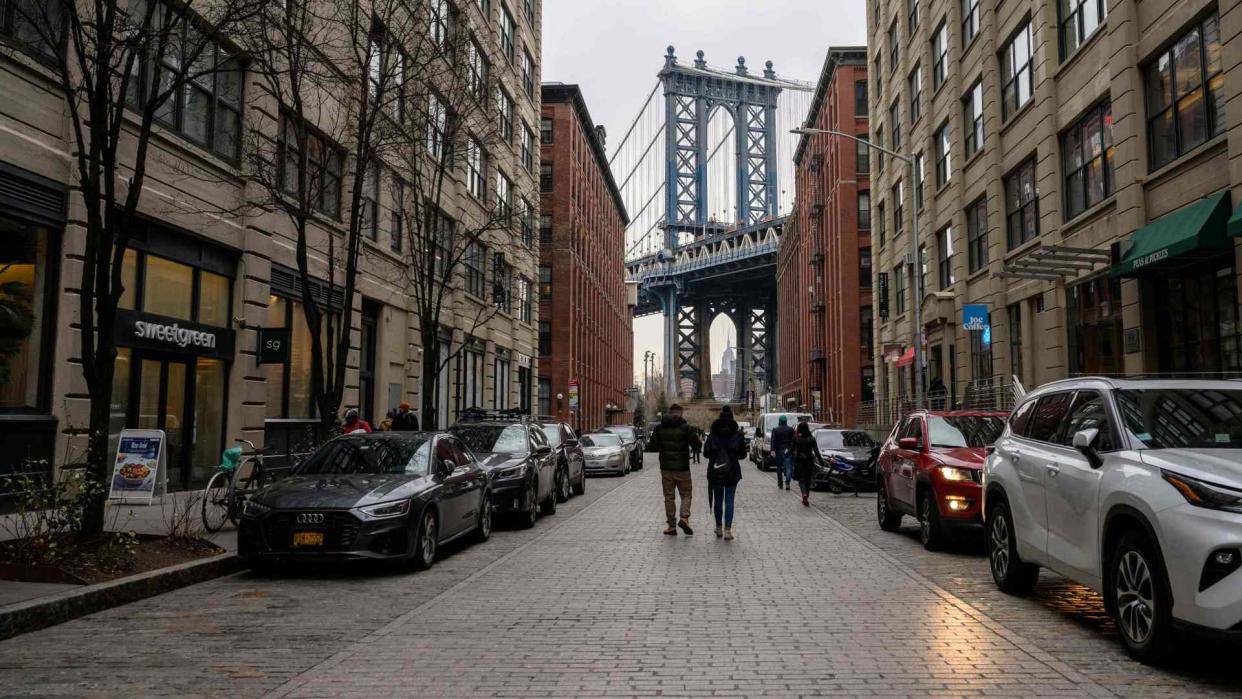'Bring on the rain, hold off the snow': New York City snow drought continues
A quick-hitting winter storm brought high hopes to snow lovers that the season's snowless streak in New York City might come to an end on Wednesday. Even though millions of New Yorkers watched the sky transform into a wintry scene Wednesday afternoon with snowflakes, it wasn't enough to officially end the streak -- but not everyone was upset.
Temperatures high in the atmosphere were just cold enough for snowflakes to form, but as the flake traveled down to the ground level, the air at ground level was too warm for them to stick.
The National Weather Service (NWS) office in New York City made the official call that only a trace of snow had fallen at the city's official weather station in Central Park just after 3:30 p.m. EST. A trace amount of snow does not count as measurable snowfall, which means the city will continue inching closer to breaking the all-time record for consecutive days without measurable snow, which was set in December 2020.
 |
Consecutive days without measurable snow in New York City as of Jan. 27, 2023. |
The longest snowless streak lasted 332 days and ended on Dec. 15, 2020. This season's streak is currently up to 324 days as of Jan. 27. No snow has been measured in the Big Apple since March 9, 2022, when 0.4 of an inch fell.
AccuWeather forecasters say that with no significant chances of snow in the forecast for the next several days, this winter has a high chance of going down in the record books.
"The only game in town here was Wednesday, (we're) going to go another several-day stretch without anything measurable," said AccuWeather Senior Meteorologist David Dombek.
New York City is also on track to break a 50-year-old record for the latest date for the first measurable snowfall of the season. The latest date on record was Jan. 29, 1973. Last week, the Big Apple surpassed the second-place record, which was set in 1871 when snow was not measured until Jan. 21.
"It's not from a lack of storms," said Dombek. "It's not like we've been in just a dry weather pattern and we can't get a raindrop or anything to fall out of the sky. It's actually been a pretty moist and pretty active weather pattern; we just haven't had the cold air."
While some people are eagerly waiting for measurable snow to fall across the Big Apple and surrounding areas, some residents don't seem to mind this ongoing snow drought.
"I love it. I don't have to worry about slipping and sliding," Tamara Hawkins, a New Jersey resident, told AccuWeather National Reporter Jillian Angeline on Wednesday. "I can just come and go as I need, and there's no stoppage on my commute. So bring on the rain, hold off the snow."
In fact, New York City is significantly below average for season-to-date snowfall. From Oct. 1 through Jan. 26, the city typically receives 12.5 inches of snow. Several other cities across the Northeast are also below average for season-to-date snowfall. Syracuse is 42.0 inches below average, and Boston is 14.1 inches below normal.
 |
Ahead of the winter season, the New York City Department of Sanitation increased its snow removal budget by $7.6 million. It's looking like the department could have a surplus by the end of the season. But then again, winter's not over yet.
While a chance of snow is possible as Arctic air creeps into the Northeast next week, AccuWeather Senior Meteorologist Paul Pastelok says once the calendar flips to February, chances of snow in New York City will likely decrease.
While March will start off mild, Pastelok notes the polar vortex could bring a change in the weather pattern, resulting in a winter storm for the New York City area.
"There could be a late-winter surge, which we've seen happen in the recent past," said Pastelok.
Additional reporting by AccuWeather National Reporter Jillian Angeline.
Want next-level safety, ad-free? Unlock advanced, hyperlocal severe weather alerts when you subscribe to Premium+ on the AccuWeather app. AccuWeather Alerts™ are prompted by our expert meteorologists who monitor and analyze dangerous weather risks 24/7 to keep you and your family safer.




